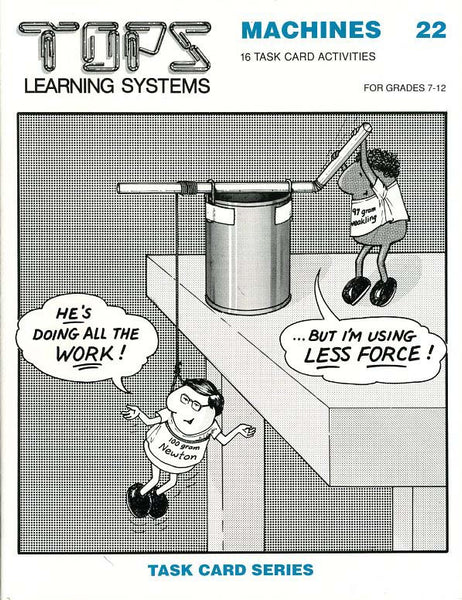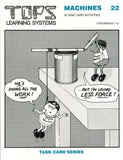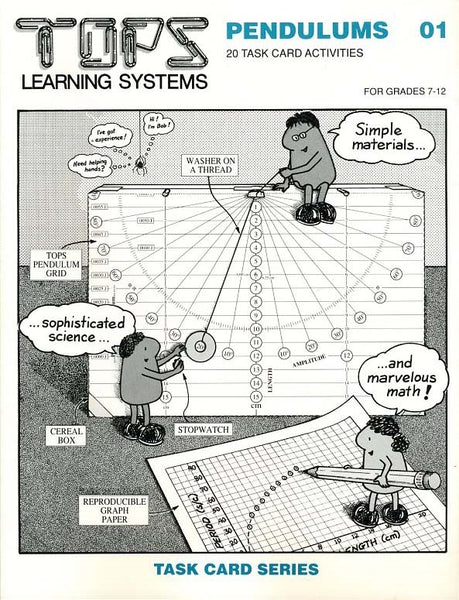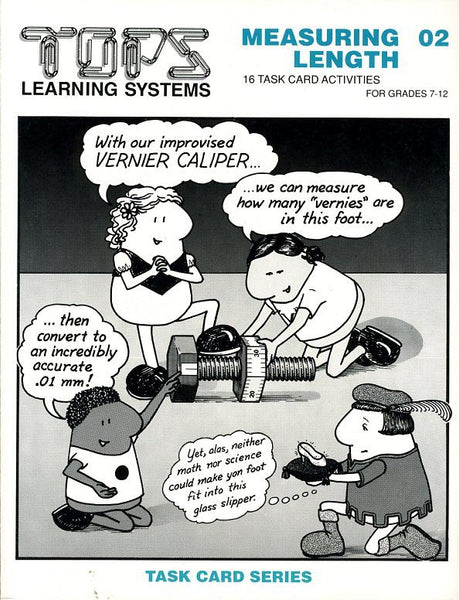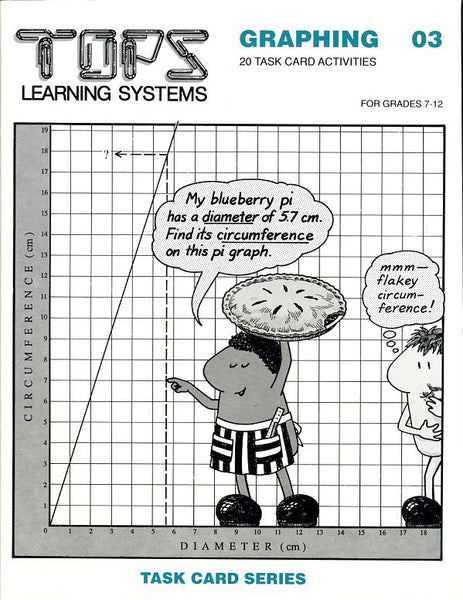#22 Machines (grades 7-12)
Regular price $19.95
Click here for a complete list of materials and convenient shopping.
meter sticks, rubber stoppers, masking tape, rulers, centimeters or inches, baby food jars with tight-fitting lids, thread, spring scales, plastic wrap, scissors, paper clips, pulleys, straws, paper punch tools, cardboard, index cards, staplers, bolts, can opener, nut cracker, broom, wire, about 14 gauge, strong smooth post, fixed upright, cord or rope, cans, rubber bands, small lids from cooking oil bottles, or equivalent, large lids from mayonnaise jars, or equivalent, small nail or thumbtack, hammer, straight pins, string, stairs, yard stick (or a one-foot ruler and string), stopwatch, bathroom scale (optional), hand calculators
- Lesson 1: To build a simple lever. To experience how this lever either reduces effort, or reduces the distance through which the effort s applied.
- Lesson 2: To understand the idea of "work" in a scientific sense.
- Lesson 3: To recognize that a lever reduces the effort required to lift a resistance but does not reduce the work.
- Lesson 4: To construct a weight for measuring on a spring scale. To compare a movable pulley with a fixed pulley.
- Lesson 5: To recognize that a simple movable pulley reduces the effort required to lift a resistance, but does not reduce the work.
- Lesson 6: To evaluate the efficiency of a movable wheel pulley. To recognize that work output is reduced by the weight of the pulley and frictional drag.
- Lesson 7: To evaluate the efficiency of a combination paper clip pulley. To calculate the effort required to lift the resistance under ideal frictionless conditions.
- Lesson 8: To graph how the effort required to pull a cart up an inclined plane changes with its angle of inclination.
- Lesson 9: To recognize that an inclined plane reduces the effort require to lift a resistance, but does not reduce the work.
- Lesson 10: To classify common machines as levers or inclined planes.
- Lesson 11: To study three different classes of levers. To classify common machines as to lever type.
- Lesson 12: To relate the number of strands that support a pulley to the relative distances moved by the effort and resistance.
- Lesson 13: To have a tug-of-war contest using a pulley system. To analyze force and distance advantages.
- Lesson 14: To build a working model of a wheel and axle. To calculate its ideal mechanical advantage.
- Lesson 15: To understand how gears work. To calculate rotational relationships between them.
- Lesson 16: To calculate how much horsepower can be generated by running up a flight of stairs.
TEACHING Standards
These 16 Task Cards promote excellence in science teaching by these NSES criteria:Teachers of science...
A: ...plan an inquiry-based science program. (p. 30)
B: ...guide and facilitate learning. (p. 32)
C: ...engage in ongoing assessment of their teaching and of student learning. (p. 37)
D: ...design and manage learning environments that provide students with the time, space, and resources needed for learning science. (p. 43)
CONTENT Standards
These 16 Task Cards contain fundamental content as defined by these NSES guidelines (p. 109).• Represent a central event or phenomenon in the natural world.
• Represent a central scientific idea and organizing principle.
• Have rich explanatory power.
• Guide fruitful investigations.
• Apply to situations and contexts common to everyday experiences.
• Can be linked to meaningful learning experiences.
• Are developmentally appropriate for students at the grade level specified.
Unifying Concepts and Processes
NSES Framework: Systems, order, and organization • Evidence, models and explanation • Constancy, change, and measurement • Form and functionCore Concepts/Processes: Machines give a force or distance advantage, but never save work.
Science as Inquiry (content standard A)
NSES Framework: Identify questions that can be answered through scientific investigations. • Design and conduct a scientific investigation. • Use appropriate tools and techniques to gather, analyze, and interpret data. • Develop descriptions, explanations, predictions, and models using evidence. • Think critically and logically to make the relationships between evidence and explanations. • Recognize and analyze alternative explanations and predictions. • Communicate scientific procedures and explanations. • Use mathematics in all aspects of scientific inquiry.Core Inquiries: Multiply force by distance to calculate work and estimate machine efficiency.
Physical Science (content standard B)
NSES Framework: Motions and forces • Conservation of energyCore Content:Weigh loads • Measure effort • Calculate work • Compute machine efficiency • Identify levers, pulleys and inclined planes • Study gear ratios • Calculate horsepower

